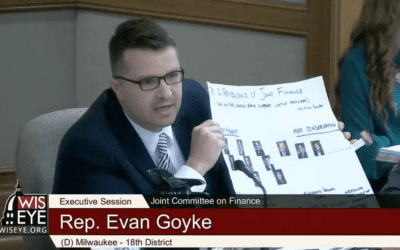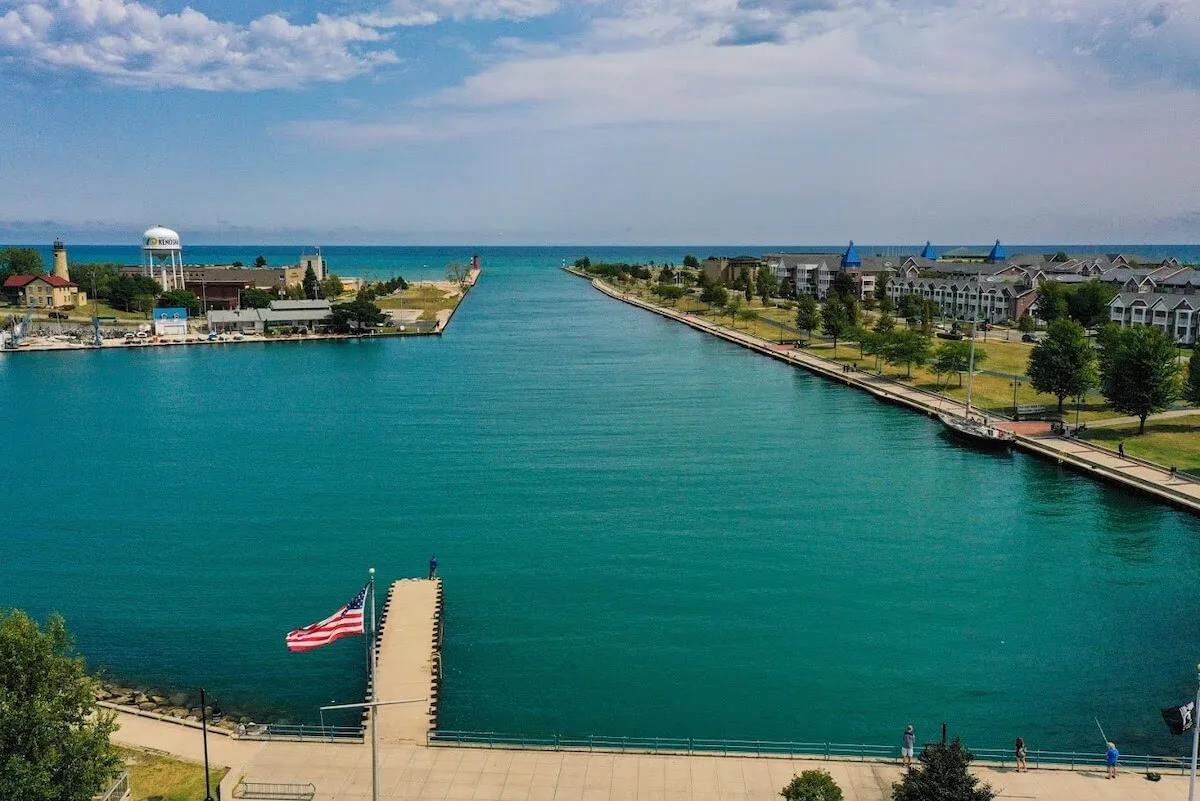
#image_title
How decades of divestment, deindustrialization, and segregation have made Kenosha one of the worst places in the country for Black people to live.
Kenosha fell under the global spotlight when a white police officer shot Jacob Blake, a Black man, seven times in the back at point-blank range on Aug. 23.
Illuminated by the spotlight is generations of systemic oppression against the city’s Black residents, an oppression that is front and center amid a national reckoning over racial and social justice.
While many white Kenoshans and Wisconsinites are for the first time discovering the pervasive effects of systemic racism in the southeastern Wisconsin city of about 100,000, a closer examination only reveals what the city’s Black residents already knew:
“Equality was non-existent before, and it’s non-existent now,” said 45-year-old commodity manager Terrance Warthen, who serves on two Kenosha County committees, the Kenosha Unity Commission, and was a founding member of Our Wisconsin Revolution. “Everybody in Wisconsin hides behind this veneer of ‘Wisconsin nice,’ and we’ve played this game that everything here is OK.”
Everything is not OK, though.
Kenosha was once a well-known automobile manufacturing powerhouse, a strong union town on the shores of Lake Michigan nestled between Chicago and Milwaukee. But now most people know the city for Blake’s shooting, which captured the attention of millions around the world just months after George Floyd, an unarmed Black man, was killed by Minneapolis police.
Like Milwaukee and Racine to the north, Kenosha is by numerous metrics one of the worst places to live for Black men and women in the country. Last year, Milwaukee and Racine were respectively named the first and second-worst metropolitan areas for Black people in the nation by analysis firm 24/7 Wall Street, which examined US Census Bureau data of metro areas across the country.
Kenosha’s issues run just as deep, but it was likely kept off the 24/7 Wall Street list because the Census Bureau officially includes it in the Chicago metropolitan area, while Racine and Milwaukee have their own metros.
Marc Levine, a professor of history, economic development, and urban studies at the University of Wisconsin-Milwaukee, in July published a grim look at dozens of socioeconomic indicators for Black residents in the Milwaukee metropolitan area, such as homeownership, household income, incarceration, and segregation. He found that Milwaukee’s metropolitan ranks the worst or in the bottom five by almost every measure when compared with the nation’s other 49 largest metro areas.
Now, Levine, who is also a founding member of UW-Milwaukee’s Center for Urban Development, is performing a similar study for other cities across Wisconsin, including Kenosha, with significant Black populations.
“The bottom line is that the key indicators I was able to look at—employment trends, income trends, earnings trends, poverty, and incarceration rates—is that conditions for Blacks living in the non-Milwaukee urban centers of Wisconsin are basically about as bad, or in certain factors worse,” Levine said.
Data shows life for Black residents of Kenosha is in some cases worse than for those living in Milwaukee.
For instance, Kenosha’s incarceration rate of Black residents is 12 times that of whites, Levine said, while Milwaukee’s is slightly lower at 10 times that of whites. The city’s Black poverty rate—33 percent—matches Milwaukee, which has the worst rate in the nation’s 50 largest metros. Kenosha’s Black homeownership rate is a paltry 18 percent, significantly lower than Milwaukee’s 27 percent.
The median Black household income is just half that of whites in Kenosha, Levine said. Black households in Milwaukee make about 42 percent as much as whites.
Kenosha is also just as segregated as Milwaukee, which is the most segregated major metropolitan area in the nation. Just 10 percent of Kenosha County’s Black population has “suburbanized” to live outside of the central city, a number that roughly matches Milwaukee’s nation-lowest Black suburbanization rate of 11.4 percent.
“Nowhere looks like this anymore,” Warthen said of Kenosha’s segregation. “I mean, Texas is more progressive than this.”
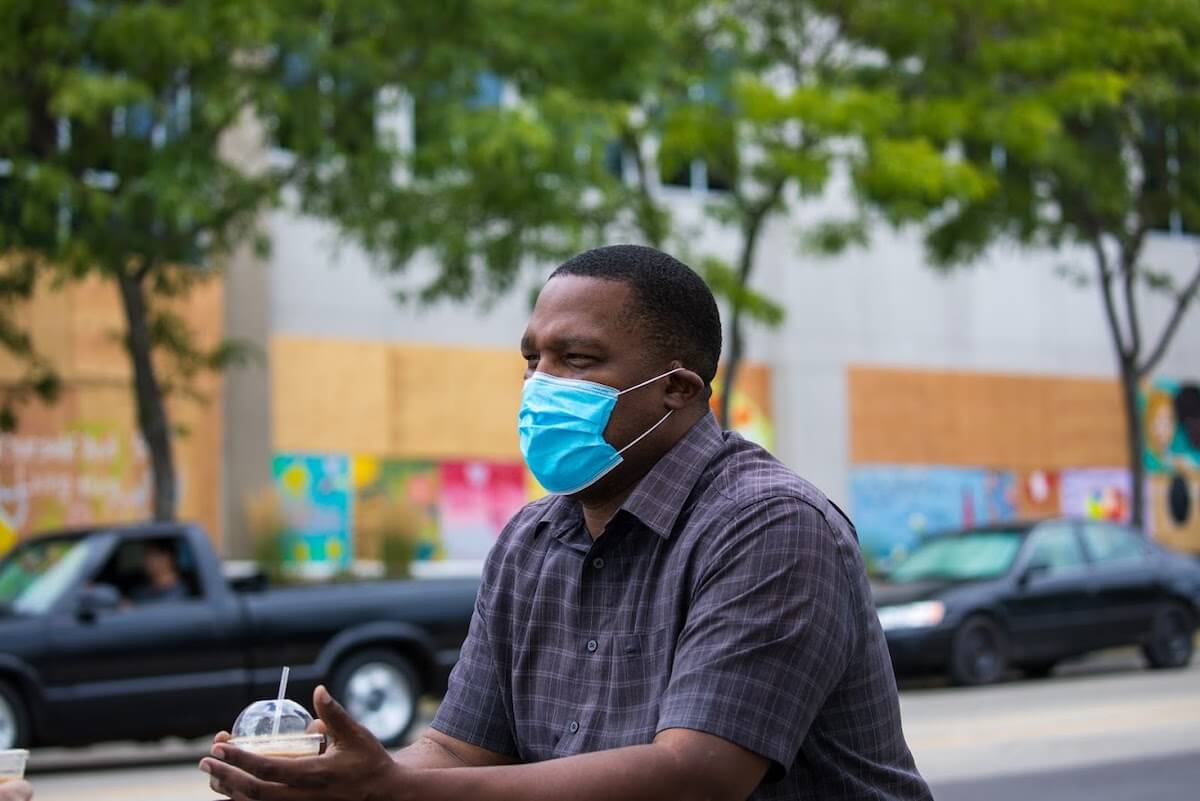
Deindustrialization strikes
The story of Kenosha is much the same as other once-proud Rust Belt towns: When deindustrialization took hold, the Black middle class collapsed as jobs moved away from cities’ urban cores and wealthier white people moved to the suburbs.
When Kenosha’s downtown American Motors Corp. factory closed in 1988, it ended a nearly 90-year legacy of auto manufacturing. About 5,500 jobs evaporated overnight with the factory’s closure, a devastating blow to the city, which was home to about 80,000 people at the time.
The city’s neighborhoods, businesses, schools, and churches were already segregated due to past redlining, but the end of the AMC plant meant that white and Black residents barely had to interact at all, Warthen said. Since then, little has changed other than continued white flight into the suburbs, a trend that has only served to entrench segregation in the city.
“Racial inequality is baked into the social fabric of cities across Wisconsin, and that’s been exacerbated in the last 40 or 50 years by the loss of good manufacturing jobs,” Levine said.

In terms of economic development, Kenosha County is doing fairly well. The population has grown at a healthy rate, and companies like Amazon, Haribo, and Uline provide thousands of jobs, while a significant amount of smaller businesses and skilled manufacturing companies have opened along the Interstate 94 corridor.
However, that development barely benefits Black residents still concentrated in the central city, especially if they lack transportation options. Interstate 94 is about seven miles from Downtown Kenosha, meaning only those with personal automobiles or a reliable method of transportation can work those jobs.
“Having a job here is really hard, because you have to go out of your way, like 30 minutes or 20 minutes away, just to get to your job,” said Anthony Smith, 25, a manager at Sugar Boxx Ice Cream Shop in Kenosha’s’ predominantly Black Uptown neighborhood. Smith, who is Black, also works at the local Cracker Barrel, which is along the interstate about 20 minutes from Downtown.
None of those new shiny factories and facilities have touched anywhere near Kenosha’s communities of color. The land where another, smaller auto factory—the former Chrysler Engine site—used to be located has been vacant since the structure was torn down in 2012. Plans call for a tech hub, which would likely require skilled, highly educated workers.

Kirk Harris, an associate professor of urban planning at UW-Milwaukee, said leaders in communities like Kenosha should work with companies closely as partners to open up shop in urban cores.
“We’ve got to stop chasing companies with these incentives,” Harris said. “Say, ‘Let’s figure out how we can partner with you on certain things. We need these kinds of jobs in our city, do you need those kind of workers?’”
Of course, that can all go belly-up even if the proposal is a good fit for the community. Look no further than the bungled Mount Pleasant Foxconn project a few miles up the road from Kenosha. The state and Racine County government bent over backwards, providing Foxconn about $4 billion in incentives for the tech company to build a sprawling, state-of-the-art factory. It was originally promised to deliver 13,000 entry-level, family supporting jobs to the area; the plans are basically up in smoke as expectations are now that it will employ 1,500 high-skill workers.
In Milwaukee, a proposed relocation of meat company Strauss Brands would have seen the company move out of its suburban headquarters to build a brand-new slaughterhouse on Milwaukee’s impoverished, predominantly Black north side. Critics, many of whom did not live there, sunk the project, leaving Mayor Tom Barrett fuming at the loss of 250 prospective union jobs.
Levine said he reviewed Kenosha County’s economic development plans for the past decade, and not one of them has addressed racial inequality when plotting out the county’s future goals and strategies.
“All of the economic energy in Kenosha has been channeled toward marketing the region as a Chicago exurb, but nothing about the racial issues and the fact there are these ongoing problems,” Levine said.
He said that while “there’s no silver bullet” to addressing the county’s entrenched racial inequality, a first step would be for the local political and business actors to acknowledge the issues exist in the first place.
A progressive, regional planning approach that is supportive of public transportation would be a good step, Harris said. Development plans for subdivisions and job-creators far out of the urban core do little for people “trapped in the city,” he said, even though central cities are regions’ economic engines.
“We’ve got to break down the ability of municipalities to continue operating as islands,” Harris said.
A lack of regional planning has led to exclusionary zoning in high-income neighborhoods and areas away from urban cores. Such zoning may prohibit apartments or mandate larger home lot sizes to essentially price lower-class people out of the neighborhoods; and in areas like Kenosha with high poverty rates among people of color, exclusionary zoning effectively operates as legal segregation.

(Photo by Samer Ghani)
‘They can ignore the Black vote’
Politically speaking, Kenosha politicians can afford to ignore the Black community, Warthen said. The county is 7.4 percent Black, while the city is 11.5 percent. There are no Black people on the County Board of Supervisors. The city has two Black aldermen. Just 3 percent of the city’s police, and 3 percent of the county sheriff’s deputies, are Black, according to the Kenosha News.
“We’re not a big enough voting bloc,” Warthen said. “Absolutely, they can absolutely ignore the Black vote here. Really, you don’t have to pay attention to this issue—and you won’t have to, sadly, until white Wisconsinites decide it’s an issue.”
Porche Bennett, organizer and spokesperson of the new social justice group Black Lives Activists of Kenosha, or BLAK, said the Black community can’t wait around anymore for change from the current elected officials.
“They’ve been there for this many years and haven’t changed anything yet,” Bennett said. “So why are we still trying to hold them up to this standard? It’s really on us to get that difference, honestly. We need to have people that are out here actually at the forefront, out here actually living in these situations, in those seats.”
Overcoming all these systemic issues will not happen overnight. But even then, the issue remains of individual instances of racism.
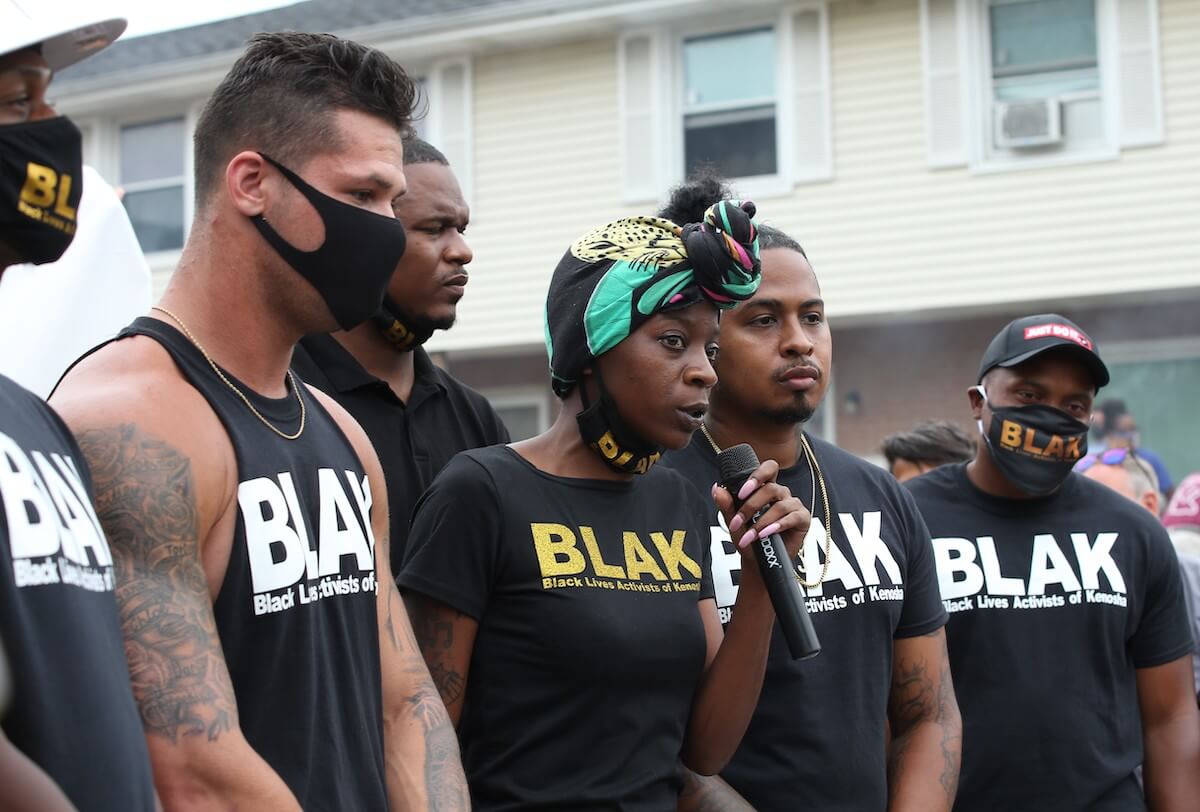
Warthen said the culture of “Wisconsin nice” has kept people from addressing racism for fear of conflict. Many storefronts in Kenosha were boarded up after protests over Blake’s shooting turned violent, and local artists flocked to Downtown and Uptown to paint bright-eyed messages of hope and unity. For Warthen, many of those messages were “Hallmark card bulls–t” that rang empty.
“When everybody’s being fake, when everybody’s being ‘Wisconsin nice,’ there’s no progress,” Warthen said.
“Kenosha might not be a place where somebody’s gonna burn a cross in your yard, and it might not be a place where somebody calls you the N-word to your face, and even though you still see it quite a bit, it might not be a place where everybody walks around with Confederate flag T-shirts,” Warthen said. “But I’ll tell you something, as somebody who grew up in the South, it’s much easier to have your racists in uniform than to have them all smiling in your face. The most unnerving thing about moving to Wisconsin 20 years ago is that everyone tried to smile at you.”
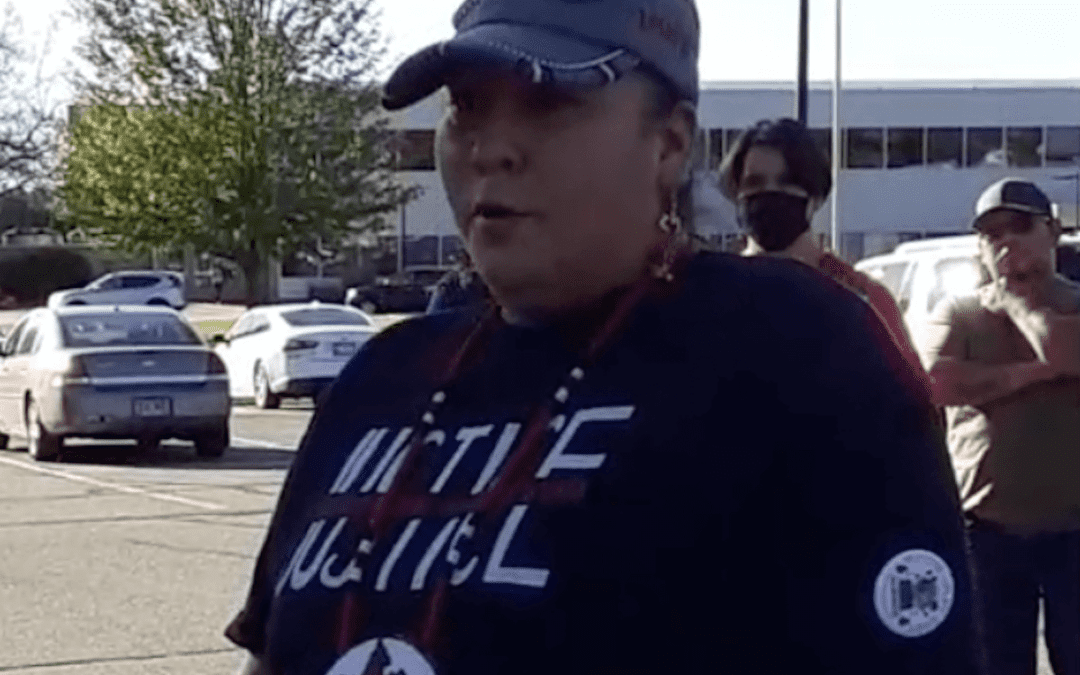
Native American Leaders Seeking Improvements to Curriculum After Teacher Wears Racist Outfit
Insensitive depictions of Native Americans are demeaning and further negative views that help lead to violence against indigenous people, advocates...
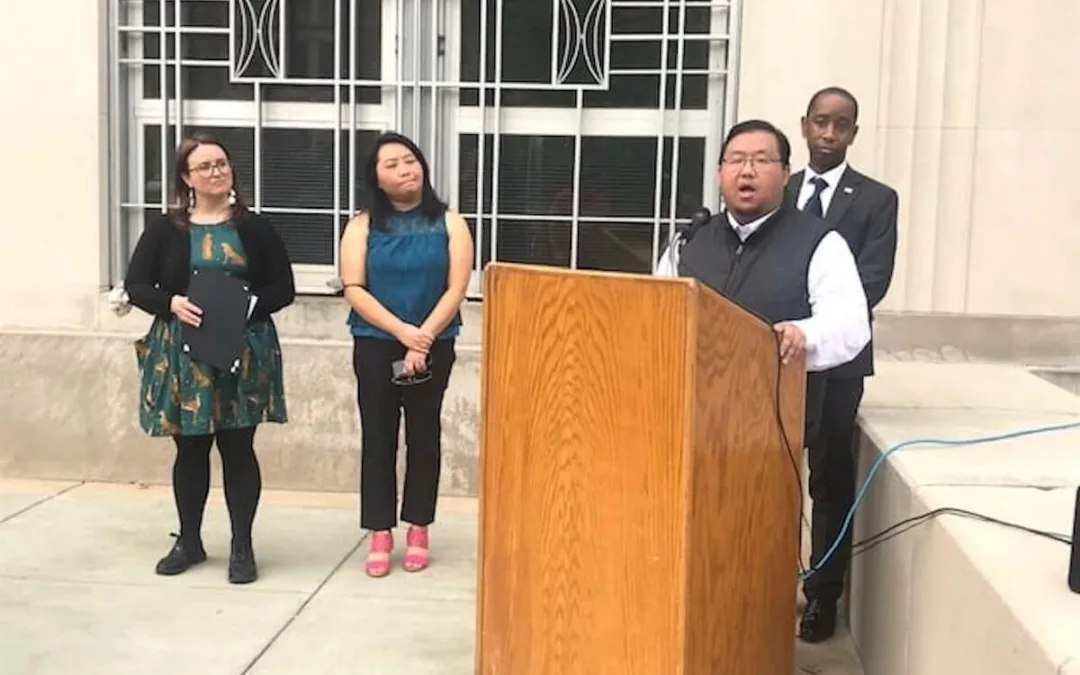
After ‘Community for All’ Resolution Fails Again, Progressive Marathon County Officials Worry ‘This Might Set Us Back’
“This sends the message that some people don’t matter as much as others in our community,” one official said. Supporters of a controversial...
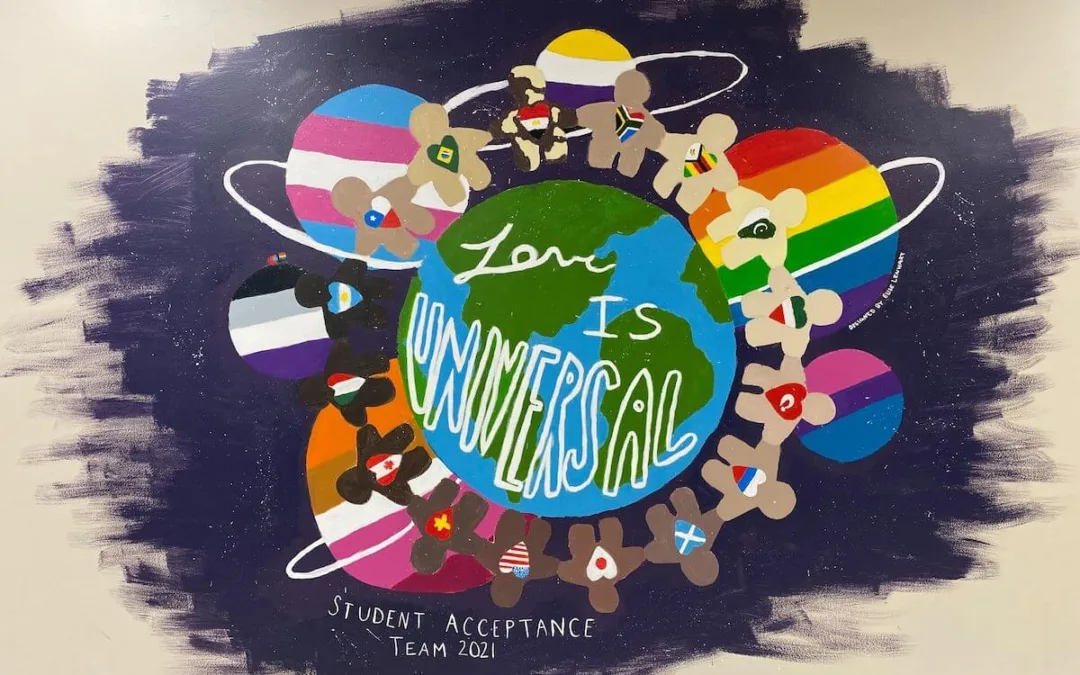
Commentary: Cedarburg’s School Mural Fiasco Shows Why We Need to Get Out of Our Bubbles
The district said the mural didn't represent "all members of our school community." But who was really left out? Earlier this month, the Cedarburg...

‘More Work Left’: First Police Reform Bills Pass, but Some Push for More
Evers says he’ll sign the bills, but he, legislative Democrats, and organizers say the state needs deeper reforms. Wisconsin will soon have a...


